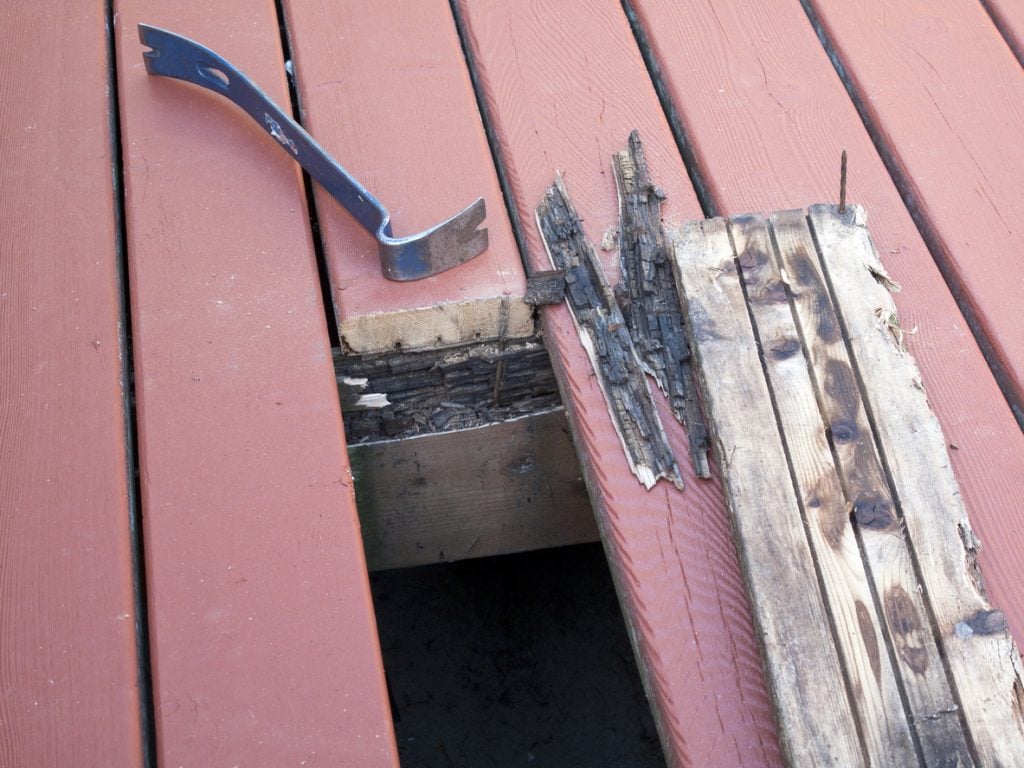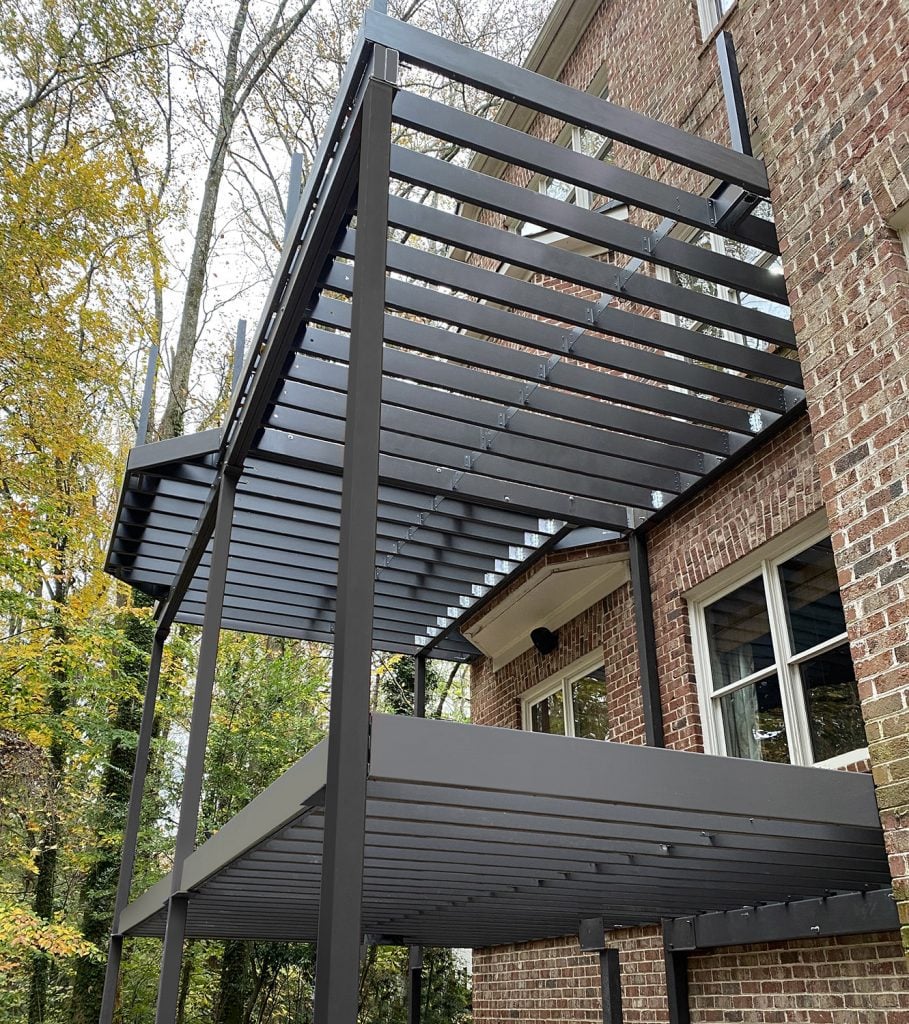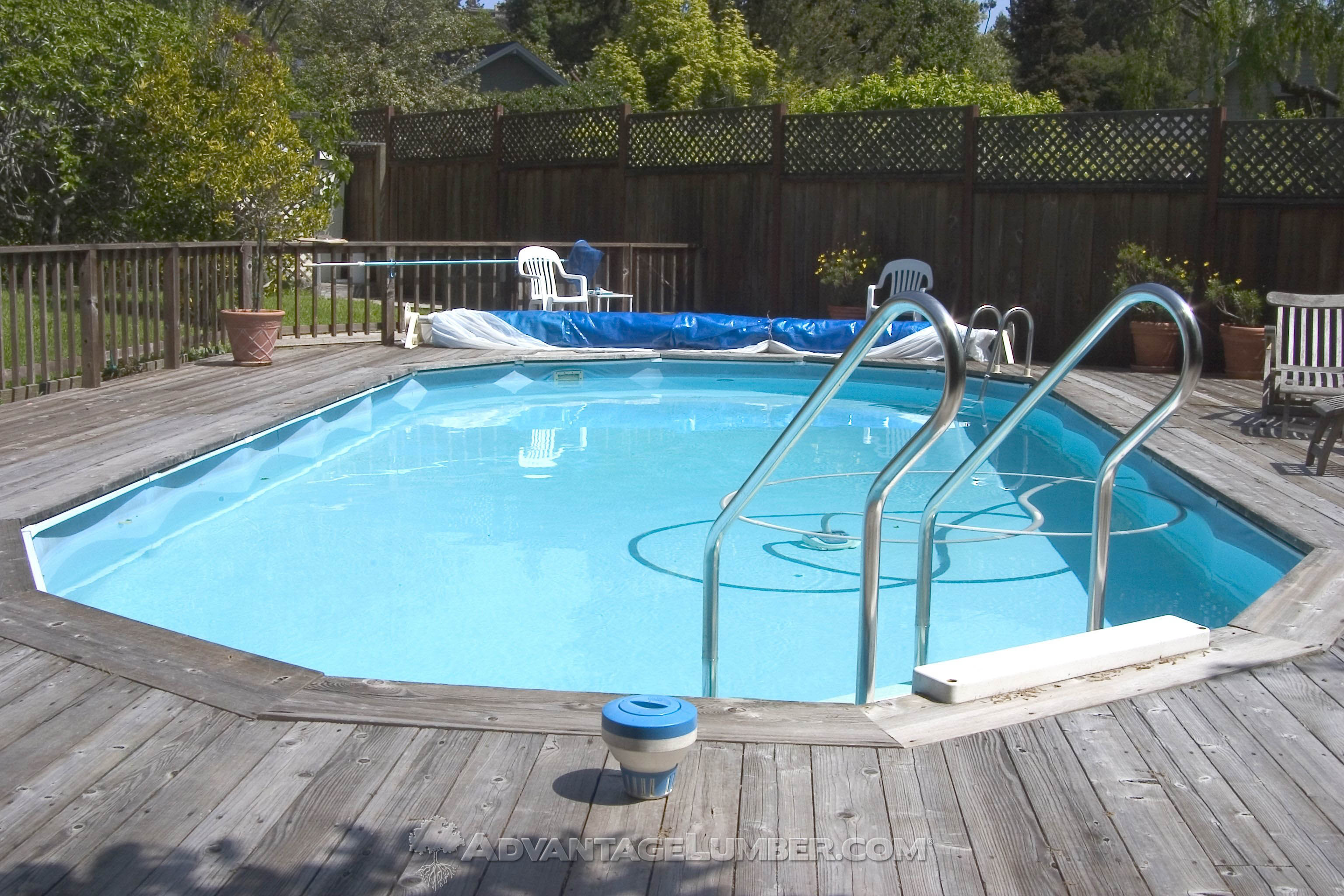Pressure-treated wood is a type of lumber that has been chemically treated to resist decay, insects, and mold. The treatment process involves placing the wood into a pressure chamber where preservatives are forced deep into the fibers of the wood.
This makes it much more durable and longer-lasting than untreated wood, especially in outdoor environments where moisture and pests are common concerns. Pressure-treated wood is commonly used in outdoor structures such as decks, fences, retaining walls and especially for deck framing.
Typical Uses of Pressure Treated Wood
One of the most common applications of pressure-treated wood is in deck framing. Since deck frames are often exposed to moisture and buried in or near the ground, they are at higher risk of rotting. Pressure-treated lumber is used to help the frame resist these harsh conditions, providing a sturdy base for decking materials like hardwood decking, composites, or PVC.
Other uses include:
- Fences
- Decks
- Retaining walls
- Pergolas and outdoor structures
- Playground equipment
- Utility poles and outdoor staircases
Old vs. New Treatments: CCA and Its Removal
Historically, one of the most common treatments for pressure-treated wood was CCA (Chromated Copper Arsenate). CCA was highly effective at protecting wood from rot and insects, making it the go-to choice for decades. However, it was taken off the market for most residential uses in 2003 due to health concerns. The arsenic component of CCA was found to leach into the surrounding soil and pose potential risks to humans and the environment.
While CCA is still used for industrial purposes, residential builders and homeowners now rely on alternative treatments such as ACQ (Alkaline Copper Quaternary) and CA (Copper Azole). These new preservatives do not contain arsenic, making them safer for residential use.
Problems with New Pressure Treated Wood

Despite these improvements, many users have reported that the newer types of pressure-treated wood do not last as long as the older CCA-treated lumber. Some of the common issues include:
- Fast Rot: Many homeowners and contractors have noticed that the new pressure-treated wood, especially in moist environments, rots much faster than expected. While it still provides some protection, the lifespan of newer pressure-treated wood often falls short of older treatments.
- Splitting and Warping: As the preservatives in pressure-treated wood can be harsh on the material, it is prone to splitting and warping over time, especially if it’s exposed to high levels of moisture or heat.
- Increased Maintenance: Due to the faster degradation and structural issues, more frequent maintenance is required, including sealing and staining, to help the wood last longer.
Alternatives to Pressure Treated Wood
Given the issues with newer pressure-treated wood, many homeowners and builders are exploring more durable and longer-lasting alternatives. One of the best alternatives is New Castle Steel Deck Framing.

Steel deck framing is becoming increasingly popular due to its unmatched durability and resistance to elements like moisture, pests, and even fire. Steel framing won’t rot, warp, or crack over time, making it an excellent choice for long-lasting deck structures. Additionally, steel is eco-friendly, as it can be recycled, and it provides a much longer lifespan compared to wood.
New Castle steel framing is triple coated to protect from rust an corrosion. The first coating is a galvanized coating like you see on highway guard rails as shown in the picture below. This coating alone would be good for many years but New Castle Steel goes above and beyond.

New Castle Steel Framing is also primed and then coated with an exterior grade finish paint that not only gives the deck framing additional protection but also makes the finished deck frame look much more aesthetically pleasing than the old wood deck frames.
All New Castle Steel products are made with American steel and engineered with longevity in mind, held to industry-leading standards, and protected by a 25-Year Limited Residential Warranty to prove it.
Other alternatives include aluminum deck framing and composite deck framing materials, which offer similar benefits in terms of longevity and resistance to environmental factors.
Conclusion
Pressure-treated wood remains a common choice for outdoor structures, especially deck framing, but it is not without its challenges. While the old CCA-treated wood was highly durable, its removal from the market led to newer treatments that are often less effective in the long run. With problems like fast rot, warping, and increased maintenance, many are turning to alternatives like New Castle Steel deck framing for a more reliable solution. As technology advances, finding the right materials for your outdoor project will depend on your long-term goals and environmental conditions.
